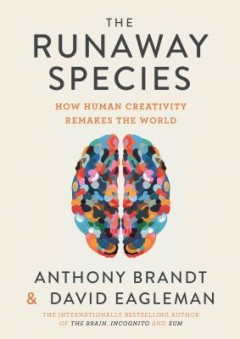Ditapis dengan

E-book Covered in Ink: Tattoos, Women and the Politics of the Body
A small dolphin on the ankle, a black line on the lower back, a flower on the hip, or a child’s name on the shoulder blade—among the women who make up the twenty percent of all adults in the USA who have tattoos, these are by far the most popular choices. Tattoos like these are cute, small, and can be easily hidden, and they fit right in with society’s preconceived notions about what is �…
- Edisi
- -
- ISBN/ISSN
- 9780814760000
- Deskripsi Fisik
- 216 halaman, ilus
- Judul Seri
- -
- No. Panggil
- 306.461.3 THO c
E-book Small-scale fishing techniques using light : A Manual for Fishermen
This manual presents some of the small-craft night baiting and fishing techniques commonly used in the Pacific Islands region, and provides Pacific Island fishermen with information that may help develop their small-craft commercial fishing operations. Some of the techniques are improvements in canoe fishing methods and use basic gear, while other techniques include modern fishing equipment use…
- Edisi
- -
- ISBN/ISSN
- 9789820004498
- Deskripsi Fisik
- 61 hlm
- Judul Seri
- -
- No. Panggil
- 639.2 SOK s

E-Book The Runaway Species: How Human Creativity Remakes the World
The Runaway Species is a deep dive into the creative mind, a celebration of the human spirit, and a vision of how we can improve our future by understanding and embracing our ability to innovate. David Eagleman and Anthony Brandt seek to answer the question: what lies at the heart of humanity’s ability—and drive—to create? Our ability to remake our world is unique among all living thin…
- Edisi
- -
- ISBN/ISSN
- 9781936787524
- Deskripsi Fisik
- 304 halaman
- Judul Seri
- -
- No. Panggil
- 150.1 EAG t
E-book Open Skies : The National Radio Astronomy Observatory and Its Impact o…
In April 1933, at a small gathering at a meeting of the US National Committee of the International Scientific Radio Union (URSI), Bell Labs scientist Karl Guthe Jansky announced that he had detected 20.5 MHz (14.6 m) radio emis-sion from the Milky Way. Jansky used a novel directional antenna based on an invention by AT&T Bell Labs colleague, Edmond Bruce, that rotated every…
- Edisi
- -
- ISBN/ISSN
- 9783030323455
- Deskripsi Fisik
- 668 hlm
- Judul Seri
- -
- No. Panggil
- 522.6 KEL o
E-book Understanding Genetics
Understanding the underlying concepts of human genetics and the role of genes, behavior, and the environment will be important to appropriately collecting and applying genetic information and technologies during clinical care. This chapter provides some fundamental information about basic genetic concepts including cell structure, the molecular and biochemical basis of disease, major types of g…
- Edisi
- -
- ISBN/ISSN
- -
- Deskripsi Fisik
- 88 hlm
- Judul Seri
- -
- No. Panggil
- 576 BUR u

BIOLOGY INSIGHTS 'O' LEVEL Theory Workbook
- Edisi
- -
- ISBN/ISSN
- 978-981-247-821-4
- Deskripsi Fisik
- 182 hlm 21x27 cm
- Judul Seri
- -
- No. Panggil
- R 574.1 TAY b
- Edisi
- -
- ISBN/ISSN
- 978-981-247-821-4
- Deskripsi Fisik
- 182 hlm 21x27 cm
- Judul Seri
- -
- No. Panggil
- R 574.1 TAY b

VERSI KEREN DIRIKU
- Edisi
- -
- ISBN/ISSN
- 978-979-22-4797
- Deskripsi Fisik
- 496 hlm;11x18 cm
- Judul Seri
- -
- No. Panggil
- 823 BRA v
- Edisi
- -
- ISBN/ISSN
- 978-979-22-4797
- Deskripsi Fisik
- 496 hlm;11x18 cm
- Judul Seri
- -
- No. Panggil
- 823 BRA v

KILLING HER SOFTLY
- Edisi
- cet. 1
- ISBN/ISSN
- 978-979-3972-37
- Deskripsi Fisik
- 600 hlm;12,5 x 19 cm
- Judul Seri
- -
- No. Panggil
- 823 BAR k
- Edisi
- cet. 1
- ISBN/ISSN
- 978-979-3972-37
- Deskripsi Fisik
- 600 hlm;12,5 x 19 cm
- Judul Seri
- -
- No. Panggil
- 823 BAR k
 Karya Umum
Karya Umum  Filsafat
Filsafat  Agama
Agama  Ilmu-ilmu Sosial
Ilmu-ilmu Sosial  Bahasa
Bahasa  Ilmu-ilmu Murni
Ilmu-ilmu Murni  Ilmu-ilmu Terapan
Ilmu-ilmu Terapan  Kesenian, Hiburan, dan Olahraga
Kesenian, Hiburan, dan Olahraga  Kesusastraan
Kesusastraan  Geografi dan Sejarah
Geografi dan Sejarah